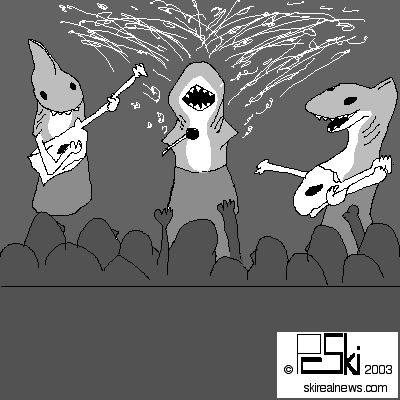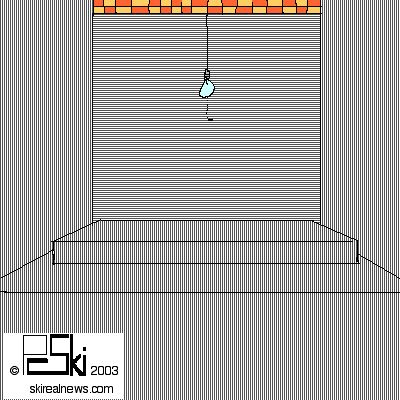
The Jack of Dangerous Clubs
There is a youthful need to do stupid things. The rush to do the fashionable thing, party all night; mosh to the music; drift the night away. You should grow out of it, but at times the common sense barometer is broken and you don't grow out of the adventurous thrills of years ago. The club tragedies in Chicago and Rhode Island have left the media aghast and wondering why do these things happen. It is simple. This is the way clubs have been formed since the Revolutionary roadside inns and taverns. The term “dive” was coined as a term of art for these places of alcoholic entertainment. Having some fading experience with the single brain cell execution of youthful bar running, the final analysis is that chaos dynamics can't be predicted reliably when it comes to matters of human interaction.
Who has not have had their fair share of dive bombing at all hours of the early morning? We used to gravitate toward the bars that had the 3 a.m., 4 a.m. or 5 a.m. liquor licenses. Things used to start jumping at about 3 a.m. in those places. The vast majority of those places of youthful transgression have been lost in the urban renewal and cloudy memory of middle age.
The rock venues were never the best buildings or in the greatest location. Most were carved out of shopping centers, old factories or warehouses on the other side of the tracks. Two words: cheap rent. Then something usually stays in the location for 20, 30, or 40 years, as one owner leaves or another tries to re-invent the entertainment space, which usually means a new name, a new sign and a new coat of paint slapped on the walls.
There were places like Ted's Warehouse, where the band was cramped on a second story loft, facing the back wall with a couple rows of seats, while the crowded dance floor below is where most of the patrons were around the bars. The motif was walls covered in black plastic. It was like you were inside a loud trash bag.
The class of the suburban rock venues was B'Ginnings, a club in Schaumburg partially owned by members of the band, Chicago. It was in the corner of a a shopping center. The illusion of supper club seating, and the eye-candy hostesses combined with ear-piercing Marshall stacks was the draw. Even with its celebrity reputation, and ability to get name bands, it closed. A driver's license facility now stands where the club once stood.
On the other side of the coin, there was a place in a shopping center in Prospect Heights, where we saw the regeneration of Steve Walsh, the lead singer of Kansas. In college, we saw Kansas in its prime, and Walsh was so out of it, that he would pound through a keyboard refrain then wander off stage, to be pushed back by the roadies. In the small, low ceiling, dark venue, you were less than a yard a way from Walsh and his new band, called Streets, as he started his comeback. That comeback did not last, and neither did the club, as it closed shortly thereafter, and the space was carved up into retail and a day care center.
These were the stage stops of bands who desired to work up to the 100,000 sardine packed faithful jamming the old Soldier Field for a summer Rolling Stones concert. From the brick walled alleys in Macomb which are turned into bars, to the nickel beer nights at Red Lion and White Horse in Champaign after the disasters at Cleveland or Disco Demolition, promoters will do anything to gather a crowd with disposal cash.
There were also the trashy dives like the Aloha, in Springfield, which was a lounge in a hotel that was built in the 1960s and never changed the tiki-hut motif, complete with the dried palm thatch ceiling. A lounge lizard behind a Casio keyboard muddled through a series of bad 70s songs to pay alimony. We had to go there because it had the latest closing hours.
There were also quaint little haunts, like Lilly's near DePaul. It was a small place near the Mines; a pre-Mines stop. It was near the spot of the St. Valentine's Day Massacre, so it would not be hard to imagine that the shooters were in that place doing a shot and beer before doing the shot and the, well, you know. Hang-outs are important in everyone's life. The Billy Goat Tavern is a natural meeting place for the ink-stained journalism crowd. Charlotte's was the closest bar to the house when growing up-- serving the cheapest drinks and greasiest thin crust pizza on earth-- until it closed.
Any place can be the gathering place. They pack the converted funeral home basements of Leatherneck frat houses mimicking the Animal House party. They pack the the boxy rectangle single story industrial brick building in suburbia with a stage on one wall and a bar on the other.
Then there are just places in dangerous neighborhoods. In 1985, with a brand new Olds Cutlass, we packed the car and drove to 43rd and King to the legendary Checkerboard Lounge to hear real blues. After overshooting the midblock bar, and doing a bat-turn as men were coming out of the shadows toward the car, we parked out front. All the doorman wanted to know was whether we had locked our car. A bare light bulb dangled from the small stage. The three piece band played the standards, as an old gent in his Sunday best shuffled with his date in front of the long cafeteria tables like he had been doing for 40 years.
We have gone to many of those blues dives, like the Kingston Mines, Blues, Blue Chicago. Once in Memphis, we were at Lafayette's. After the last call, the bartender left his station to the single front door. Instead of ushering us out, he locked the door, and the band played on. We thought it was just southern hospitality. It was a good time. And that was the short-sighted point.
All these places had the same basic dangerous elements-- close quarters, loud music, diverse group of people, wood paneled walls, low ceilings, red ember ashtrays, a fog of second hand smoke, and a single front door blocked by bouncers and those who couldn't fork over the cover charge.
The more time passes, the more things stay the same. There will be the same bars and clubs thirty years from now; many grandfathered in from building codes. Many just hazy memories of youth. As the crowds move from fad place to hot spot, the older places stay stagnant, change, are reborn or close. The Checkerboard Lounge, which Crain's Chicago Business featured as possibly closing due to high taxes, high rent and a changing high end redevelopment building boom in Chicago squeezing out the old, is one prime example.
So if one looks back at all the places you have been to, and recollect what the places looked like, felt like, and what a fire-trap they were, it is hard to imagine why there are not more horror stories hitting the headlines about something bad happening at clubs.

©2003 Ski
skirealnews.com
distributed by pindermedia.com, inc.